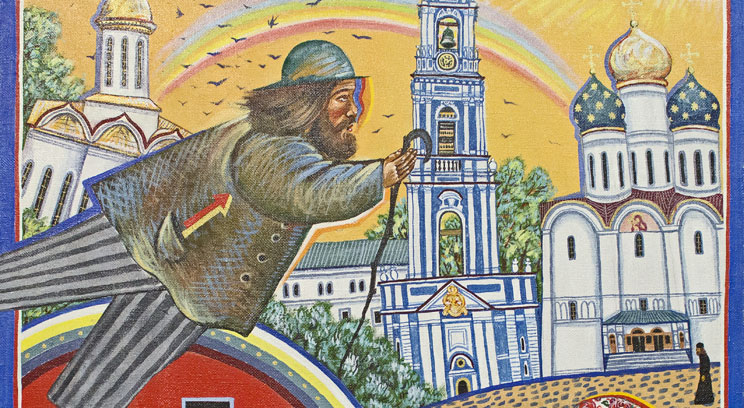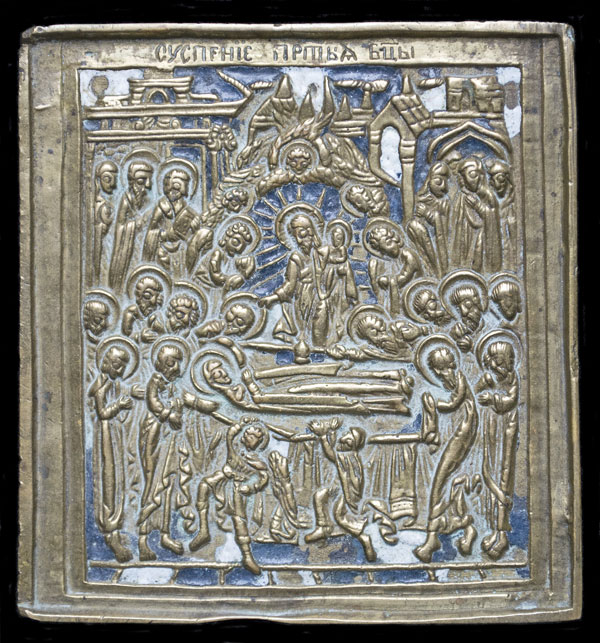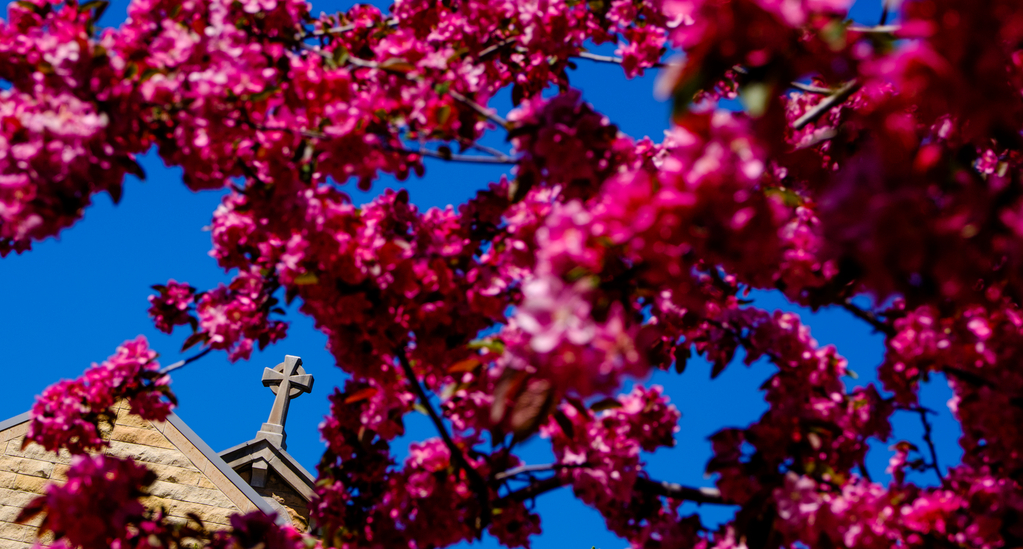An exhibition of sacred art that spans seven centuries, 21 countries and a range of media is on display through Jan. 4, 2014, at the University of St. Thomas.
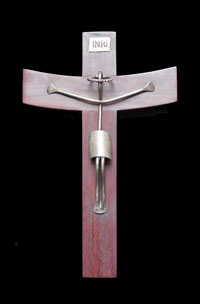
This small crucifix was made in Mexico in the early 21st century. It is made of bent silver and cherry wood.
“The Face of Faith: Sacred Images From the St. Thomas Collection” is free and open to the public; it can be viewed in the O’Shaughnessy Educational Center lobby gallery on the university’s St. Paul campus. A reception will be held from 5:30 to 7:30 p.m. Saturday, Sept. 21. For more information call (651) 962-5560 or visit this Art History Department website.
The exhibition’s 58 pieces were selected to show the commonalities of sacred art as well as the differences. The works are organized in glass cases containing crucifixes, non-Western art, icons, and art pertaining to Mary and the life of Jesus.
“Many of the works are traditional Western depictions, while others represent the Orthodox tradition, and yet others are from non-Western cultures,” said Dr. Shelly Nordtorp-Madson, chief curator and clinical faculty member for the university’s Art History Department. “Made of metal, stone, glass, paper, wood and a variety of other materials, these works express both individual and cultural interpretations of Christianity over time and space.”
In addition to the United States, the exhibition has art from Russia, Mongolia, Romania, Armenia, Germany, England, Ireland, Sweden, the Netherlands, Flanders (a former country that is now a region mostly in Belgium), Greece, Italy, Cuba, Guatemala, Papua Indonesia, Uganda, Egypt, South Africa, Congo and Botswana.
Of the 58 items on display, 39 of them are crucifixes or images of crucifixes. Thirty-eight of the items are from a 47-piece collection recently donated to St. Thomas by Father Dennis Dease, who retired earlier this year after serving 22 years as the university’s president.
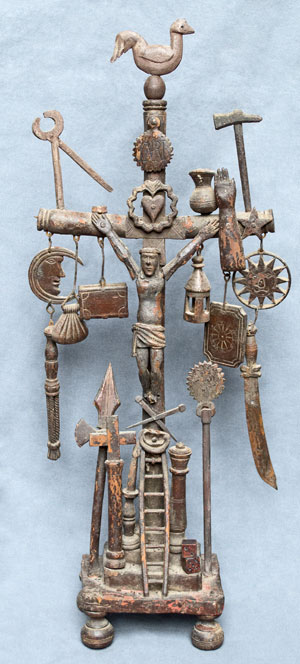
Made in France in the late 19th century, this house altar includes a rooster and tools used to nail and remove Jesus from the cross.
Dease has been collecting art for about 30 years. “When I travel, I pick up stuff,” he said. “Some of the collection came from my journeys, and some came as gifts from friends.
“I thought my gift to the university would provide a fine teaching collection because it covers several centuries and many cultures. The extraordinary meaning that the crucifix holds for people of faith has been expressed in countless ways over time. It shows the limitless nature of human imagination when applied to a single form or object, in this case the image of Christ on the cross,” Dease said.
“I’m happy that people will have the opportunity to see the works,” he added. “I hope they will learn something about art as well as faith.”
“With Father Dease’s recent retirement, and the recent donation of his collection, this was a good time to take these works out of storage and let them be seen by the community,” said Lauren Greer, an art history graduate student and one of eight students who worked with Nordtorp-Madson on the exhibition.
Here’s a sample of what visitors to the exhibition will see:
- A late 15th century wooden Crucifixion scene, from southern Germany, that stands more than 5 feet tall.
- A collection of Russian icons, all painted on wood, from the 17th and 18th centuries.
- A 1652 Rembrandt etching, “Adoration of Shepherds.”
- A 19th century French crucifix with a clock and chimes in it.
- A Madonna carved from a tusk.
- A 19th century illustrated genealogical Bible from Sweden.
- Wood carvings by the Asmat people from Papua Indonesia.
- Crucifixes from Cuba and East Africa.
- A triptych of the Madonna from Egypt.
- A French, 19th century wooden house altar that has a crucifix adorned with a rooster, ladder, lantern, sword and tools used to both nail and remove Jesus from the cross. The rooster refers to Jesus’ prediction to Peter that before the rooster crows Peter would deny him three times.
Greer said one piece her fellow students thought was especially interesting is a large contemporary image of Jesus created by Mitchell Scherer of Bloomington, Minn. He made the work from hundreds upon hundreds of variously shaded, wood veneer tiles, each about the size of a pencil eraser. All the tiles came from Minnesota trees.
Dease agrees with the students. “The Mitchell Scherer piece is one of my favorites in the exhibition,” he said. “It has a mystical, ethereal appearance. If you stand close, the image of Jesus is hazy. If you stand farther back, your brain actually creates the image of a face out of the shaded wooden tiles.”
While the Scherer piece is among Dease’s favorites, his vote for “probably most unusual” goes to the French crucifix that has a clock and chimes in it. The clock takes the form of a revolving globe. “I think the artist was expressing to us that Jesus’ death bridges time and eternity. However, I can’t recall ever seeing another crucifix with a clock in it.”
